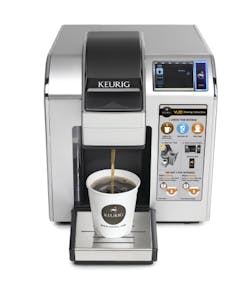NPD Reports Single-Serve Coffeemaker Sales Near $1 Billion
According to the NPD Group, a global information company, U.S. sales of single-serve brewing systems grew 8 percent to $930 million in 2013. NPD’s Geo Level Retail Tracking Service showed that, while the top 10 DMAs (designated market area) represented more than one quarter of category sales in 2013, the Western region experienced the strongest growth in single-serve coffeemaker sales, followed by the central and Southern regions – all regions that also showed the highest increases in distribution at retail.
“The single-serve coffee maker category is maturing and the next logical opportunity is to evaluate both under-and-over-penetrated markets. The analysis will enable marketers to more efficiently target resources, and ultimately continue to drive this category’s performance,” said Debra Mednick, executive director and home industry analyst of the NPD Group, in a prepared statement.
Among the top 10 DMAs, based on U.S. retail dollar sales of single-serve brewing systems, Dallas/Fort Worth, Texas, and Minneapolis/St. Paul, Minn., over-index on their share of the market as compared to their share of population. New York City, N.Y., and Los Angeles, Calif., take the top spots in terms of sales of single-serve brewing systems, but, under-index relative to their share of the population. Sales of these products in the Los Angeles area grew by double digits in 2013, while sales in northeast market, including NYC, have leveled off.
While 19 percent of all single-serve brewing system dollars are spent online, nearly three-quarters still come from brick-and-mortar sales, making the in-store exposure to the category important to reaching regional consumers.
“Pod-based machines have proven to be an important segment in the world of home coffee brewing, as a result of the convenience and simplicity in personalization that they provide. However, features of single-serve may mean trade-offs for some consumers which likely become more apparent when understanding the landscape locally, rather than nationally,” added Mednick.
